Text

Mandane was a Median princess and, later, the queen consort of the Persian king Cambyses I and the mother of Cyrus the Great, the founder of the Achaemenid Empire. The name likely originates from the Old Iranian *Mandanā-, which means “delighting, cheerful”.
1 note
·
View note
Text
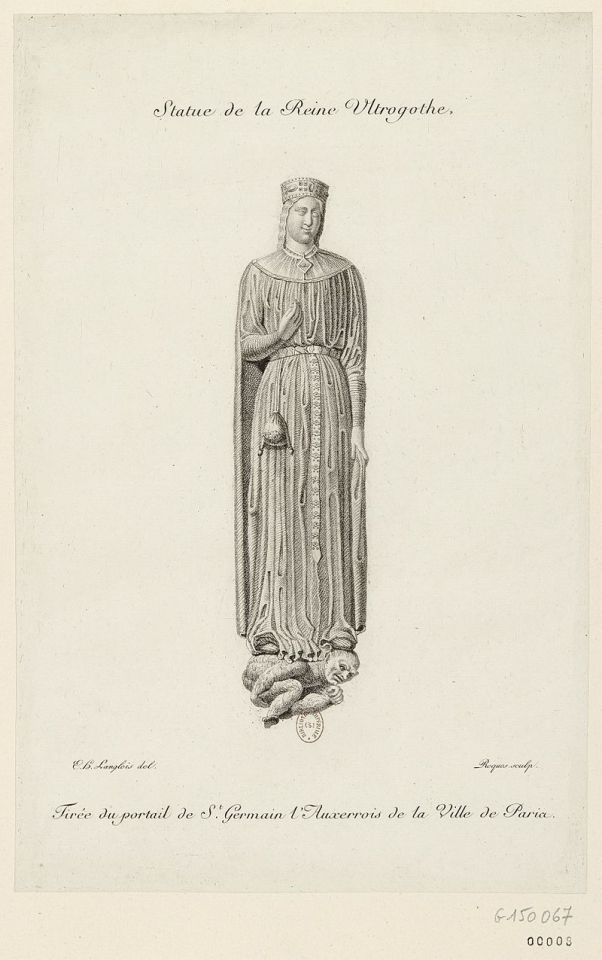
Ultragotha (or Ultrogothe, c. 496 – after 566/567) was a Frankish queen of the Merovingian dynasty via her marriage to Childebert I, reigning from c. 541 to 558. They had two daughters, possibly named Chrodoberge and Chrodesinde.
When Childebert died in 558, his brother Clotaire I seized his kingdom and took control of the Palais de la Cité in Paris, where the royal treasures and the family of the deceased were. According to Gregory of Tours, he then condemned Ultragotha and the two daughters to prison. Upon reuniting the kingdom of Clovis, Clotaire I freed them; the daughters likely became nuns. She died in around 567 and was buried in the St-Germain-des-Prés along with Childebert. The two daughters are also buried there.
In 580, again according to Gregory of Tours, Ultragotha's former Chancellor, Ursicinus, was chosen by Maurilio, bishop of Cahors, as his successor.
1 note
·
View note
Text
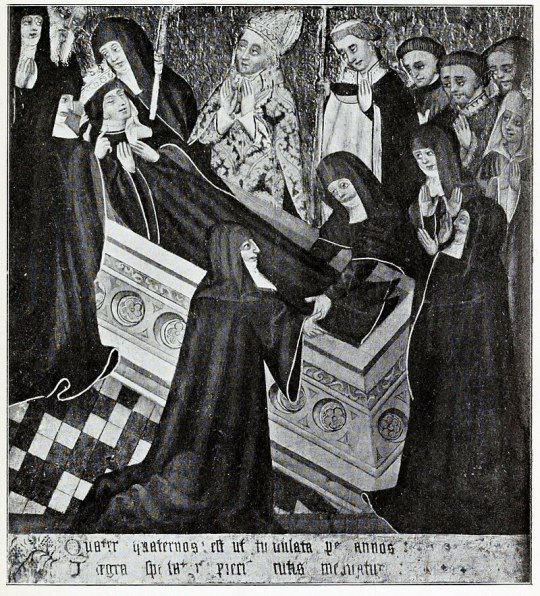
Seaxburh, also Saint Sexburga of Ely (died about 699), was an Anglo-Saxon queen and abbess, venerated a saint of the Christian Church. She was married to King Eorcenberht of Kent.
After her husband's death in 664, Seaxburh remained in Kent to bring up her children. She acted as regent until her young son Ecgberht came of age.
Seaxburh founded the abbeys at Milton Regis and Minster-in-Sheppey where her daughter Ermenilda was also a nun. She moved to the double monastery at Ely where her sister Æthelthryth was abbess and succeeded her when she died in 679.
According to Bede, in 695, Seaxburh organised the movement (or translation) of Æthelthryth's remains to a marble sarcophagus, after they had lain for sixteen years in a common grave. On opening the grave, it was discovered that her body was miraculously preserved. The legend is described in Bede's Ecclesiastical History of the English People, which celebrates the saintly virtues of Æthelthryth, but speaks less highly of Seaxburh, referring only to her marriage, succession as abbess and translation of her sister's relics. The date of Seaxburh's death at Ely is not known. The surviving versions of the Vita Sexburge, compiled after 1106, describe her early life, marriage to Eorcenberht, retirement from secular life and her final years as a nun and abbess at Ely.
1 note
·
View note
Text
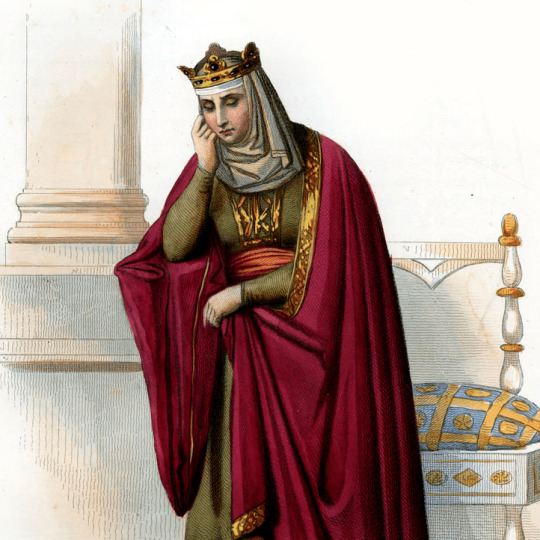
Brunhilda (c. 543 – 613) was queen consort of Austrasia, part of Francia, by marriage to the Merovingian king Sigebert I of Austrasia, and regent for her son, grandson and great-grandson.
In her long and complicated career she ruled the eastern Frankish kingdoms of Austrasia and Burgundy for three periods as regent for her son Childebert II from 575 until 583; her grandsons Theudebert II and Theuderic II from 595 until 599; and her great-grandson Sigebert II in 613. The period was marked by tension between the royal house and the powerful nobles vying for power.
Brunhilda was apparently an efficient ruler, but this and her forceful personality brought her into conflict with her nobles, the church and the other Merovingians. Her bitter feud with Fredegund, mistress of Chilperic I of Neustria, who murdered Brunhilda's sister, Queen Galswintha (c. 568), in order to replace her as queen, lasted until Fredegund's death in 597. Fredegund had Brunhilda's husband murdered and Brunhilda imprisoned for a period. This feud was continued by Fredegund's son, Chlothar II, who in 613 defeated Brunhilda in battle and had her executed by being pulled apart by four horses.
2 notes
·
View notes
Text

Saint Amalberga of Maubeuge (also Amalia, or Amelia of Lobbes or Binche) was a Merovingian nun and saint who lived in the 7th century.
1 note
·
View note
Text

Gertrude (598 – fl. 630), also Gomatrude, Gométrude, or Gomatrudis, was a Frankish queen consort by marriage to king Dagobert I. It is possible that Gomentrude was descended from Ragnacaire (fl. 486), king of the Franks in Cambrai, through his son Magnachaire (fl. 555), Duke of the Franks. She was the younger sister of queen Sichilde, third wife of King Clotaire II. Their brother was likely lord Brodulf (assuming Sichilde is the mother of Charibert II), who tried to defend the rights of his nephew on the kingdom of Aquitaine against the ambitions of Dagobert I.
#Gomentrude#women in history#VI century#VII century#stained glass#photo#photography#Merovingian Dynasty
0 notes
Text

Clotilde (c. 474 – 3 June 545), also known as Clothilde, Clotilda, Clotild, Rotilde etc., was a Queen of the Franks. She was supposedly descended from the Gothic king Athanaric and became the second wife of the Frankish king Clovis I (r. 481–509) in 493. The Merovingian dynasty to which her husband belonged ruled Frankish kingdoms for over 200 years (450–758).
Venerated as a saint by the Roman Catholic Church as well as by the Eastern Orthodox Church, she played a role in her husband's famous conversion to Christianity and, in her later years, became known for her almsgiving and penitential works of mercy. She is credited with spreading Christianity within western Europe.
#Saint Clotilde#Clotilde#Merovingian Dynasty#V century#VI century#miniature#art#arte#women in religion#women in history
0 notes
Text

Theodegotha (5th-century – fl. 502) was a Visigoth queen consort by marriage to king Alaric II (494–507).
She was the daughter of Theodoric the Great. Her marriage was arranged as an alliance between the Visigoths and the Ostrogoths, though it is disputed when it took place and therefore the exact reasons for the alliance. She was the mother of Amalaric.
0 notes
Text
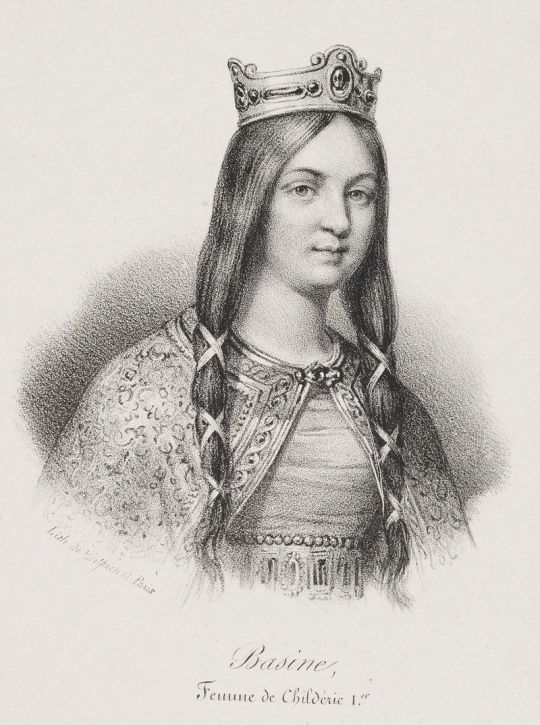
Basina or Basine (c. 438 – 477) was remembered as a queen of Thuringia in the middle of the fifth century, by much later authors such as especially Gregory of Tours. However, because Gregory described her family's kingdom of Thuringia as being on the Gaulish or western side of the river Rhine, it is sometimes thought to be the Civitas Tungrorum, which is now Belgium.
1 note
·
View note
Text

Today's speed paint is a frankly indecent Feanor: no jewels, no braids, just flowy hair in the wind… I'm almost ashamed of myself! Maybe I should tag it NSFW? XD
I hope you don't mind too much <;
Prints and other stuff on my RedBubble and Threadless
374 notes
·
View notes
Text
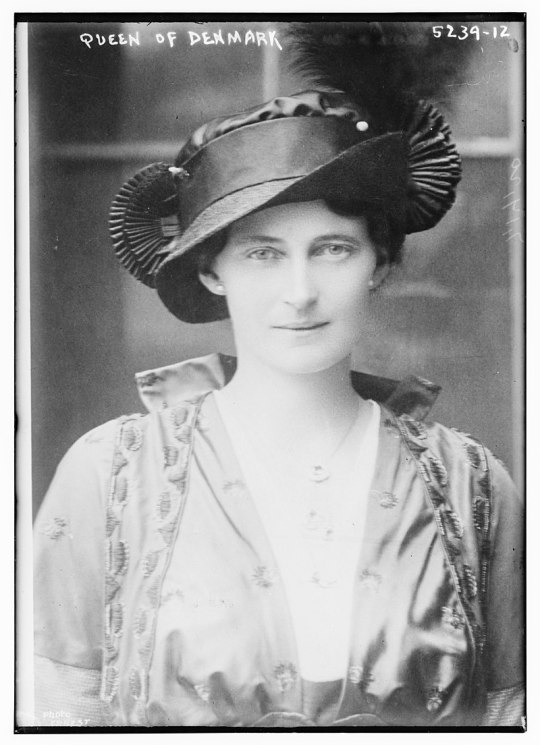
Alexandrine of Mecklenburg-Schwerin (24 December 1879 – 28 December 1952) was Queen of Denmark from 1912 to 1947, as well as Queen of Iceland from 1918 to 1944 as the spouse of King Christian X.
Alexandrine was a daughter of Frederick Francis III, Grand Duke of Mecklenburg-Schwerin and Grand Duchess Anastasia Mikhailovna of Russia. She was brought up with simplicity, and her early life was peripatetic, spending summers in Mecklenburg and the rest of the year in the south of France. She married Prince Christian of Denmark in 1898.
Alexandrine became crown princess in 1906 and queen consort of Denmark in 1912. She is not considered to have played any political role, but is described as being intelligent and a loyal support to her spouse. In spite of her German background, she was loyal to her new country and stood by her husband during the German occupation of Denmark during World War II.
#Alexandrine of Mecklenburg-Schwerin#House Mecklenburg-Schwerin#women in history#photo#photography#black and white
0 notes
Text

Mae Busch (born Annie May Busch; 18 June 1891 – 20 April 1946) was an Australian-born actress who worked in both silent and sound films in early Hollywood. In the latter part of her career she appeared in many Laurel and Hardy comedies, frequently playing Hardy's shrewish wife.
#Mae Busch#women in history#women in movies#actress#photo#photography#black and white#xix century#xx century
0 notes
Text

Lucy Christiana, Lady Duff-Gordon (née Sutherland; 13 June 1863 – 20 April 1935) was a leading British fashion designer in the late 19th and early 20th centuries who worked under the professional name Lucile.
#Lucy Duff-Gordon#women in history#women in fashion#Lucile#xix century#xx century#photo#photography#black and white
5 notes
·
View notes
Text

Princess Irene of Hesse and by Rhine (Irene Luise Marie Anne; 11 July 1866 – 11 November 1953), later Princess Henry of Prussia, was the third child and third daughter of Princess Alice of the United Kingdom and Louis IV, Grand Duke of Hesse and by Rhine. Her maternal grandparents were Queen Victoria and Prince Albert of Saxe-Coburg and Gotha. Her paternal grandparents were Prince Charles of Hesse and by Rhine and Princess Elisabeth of Prussia. She was the wife of Prince Henry of Prussia, a younger brother of Wilhelm II, German Emperor and her first cousin. The SS Prinzessin Irene, a liner of the North German Lloyd was named after her.
Her siblings included Princess Victoria of Hesse and by Rhine, wife of Prince Louis of Battenberg, Grand Duchess Elizabeth Feodorovna of Russia, wife of Grand Duke Sergei Alexandrovich of Russia, Ernest Louis, Grand Duke of Hesse and by Rhine, and Empress Alexandra Feodorovna of Russia, wife of Tsar Nicholas II of Russia. Like her younger sister, the empress, Irene was a carrier of the hemophilia gene, and Irene would lose her sisters Alix and Elisabeth in Russia to the Bolsheviks.
#Irene of Hesse and by Rhine#House Hesse-Darmstadt#women in history#xix century#xx century#people#portrait#photo#photography#black and white
0 notes
Text

Enrique Simonet - Lady portrait
0 notes
Text

Judith of Flanders (circa 843 – 870 or later) was a Carolingian princess who became Queen of Wessex by two successive marriages and later Countess of Flanders. Judith was the eldest child of the Carolingian emperor Charles the Bald and his first wife, Ermentrude of Orléans. In 856, she married Æthelwulf, King of Wessex. After her husband's death in 858, Judith married his son and successor, Æthelbald. King Ætheldbald died in 860. Both of Judith's first two marriages were childless. Her third marriage was to Baldwin I, Margrave of Flanders, with whom she had several children.
0 notes
Text

Wells Cathedral is an Anglican cathedral in Wells, Somerset, England, dedicated to St Andrew the Apostle.
0 notes